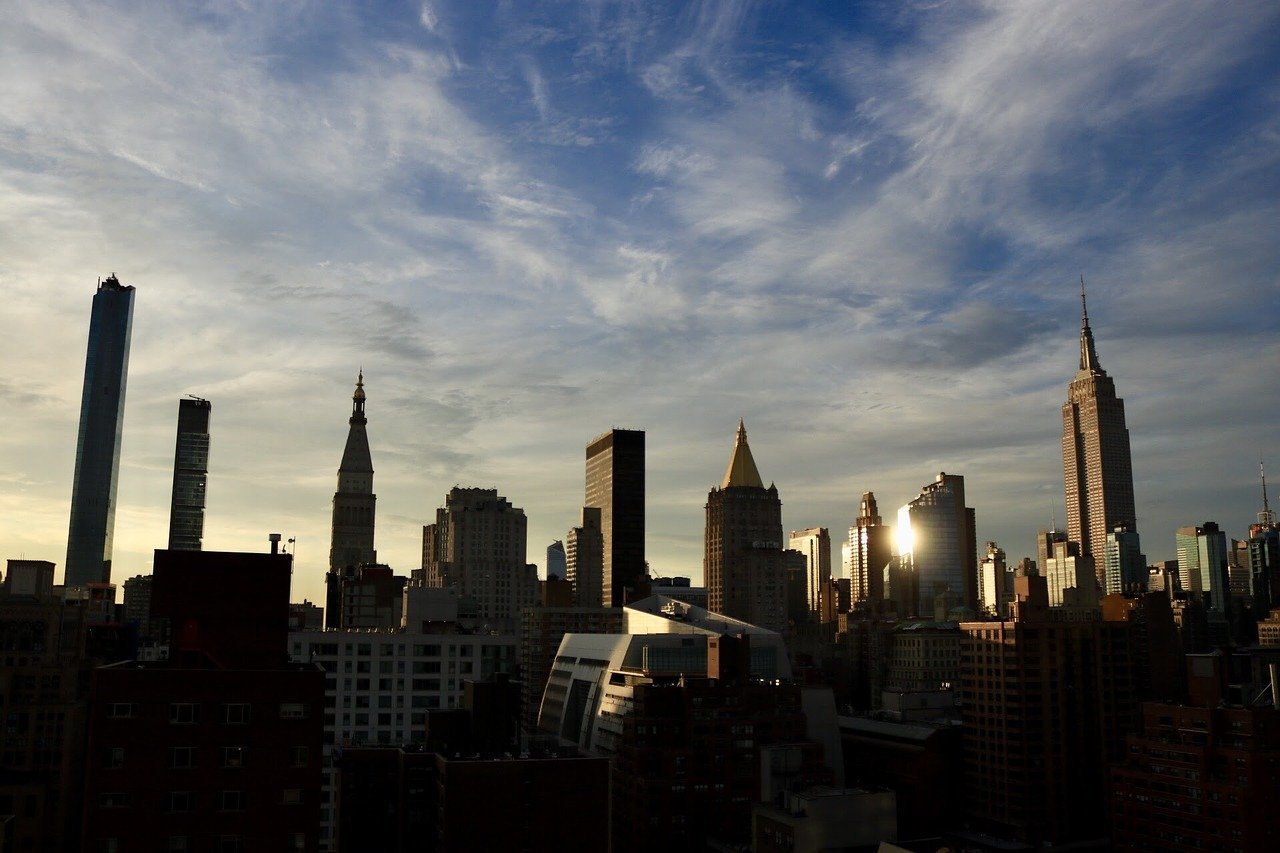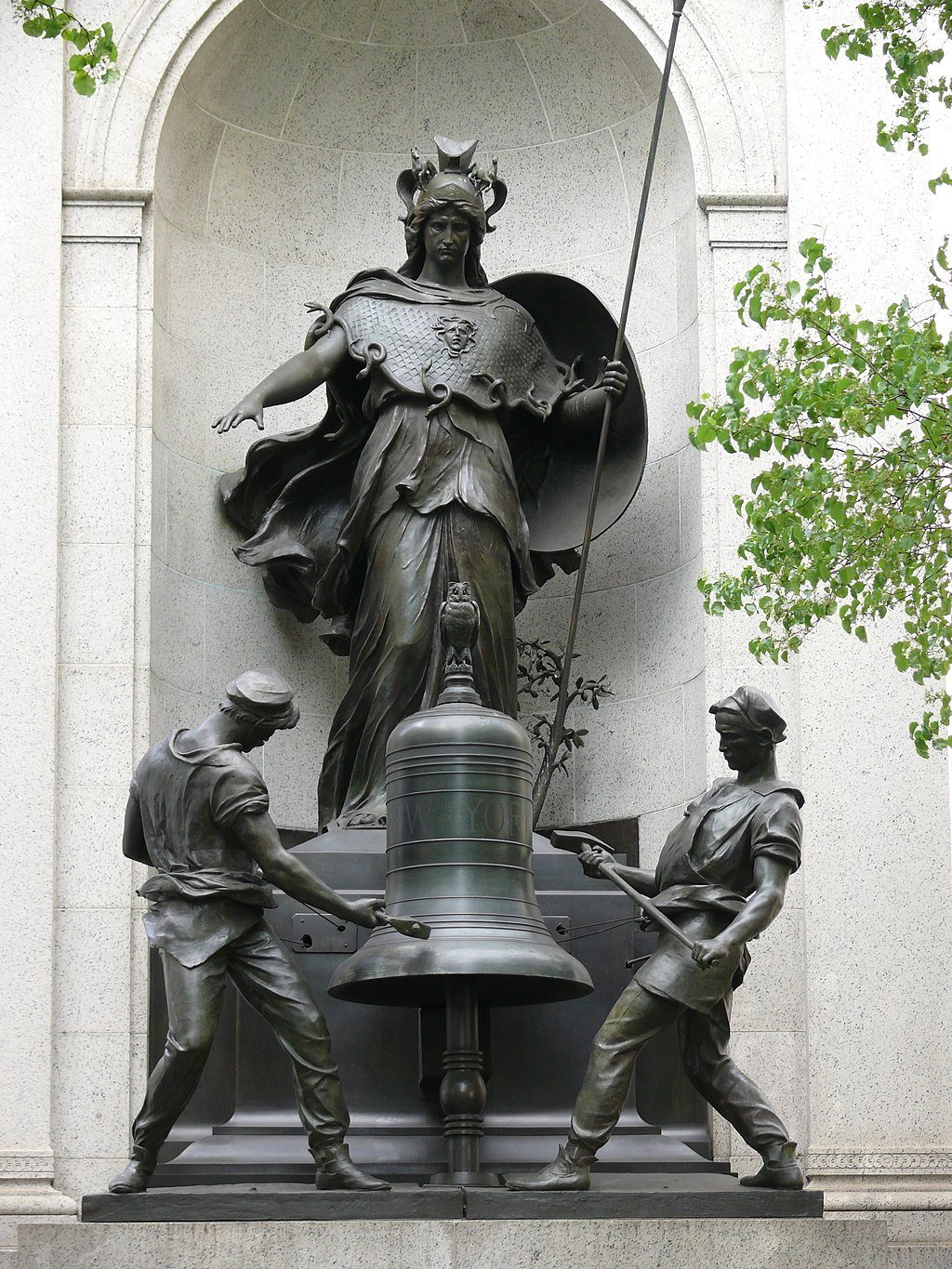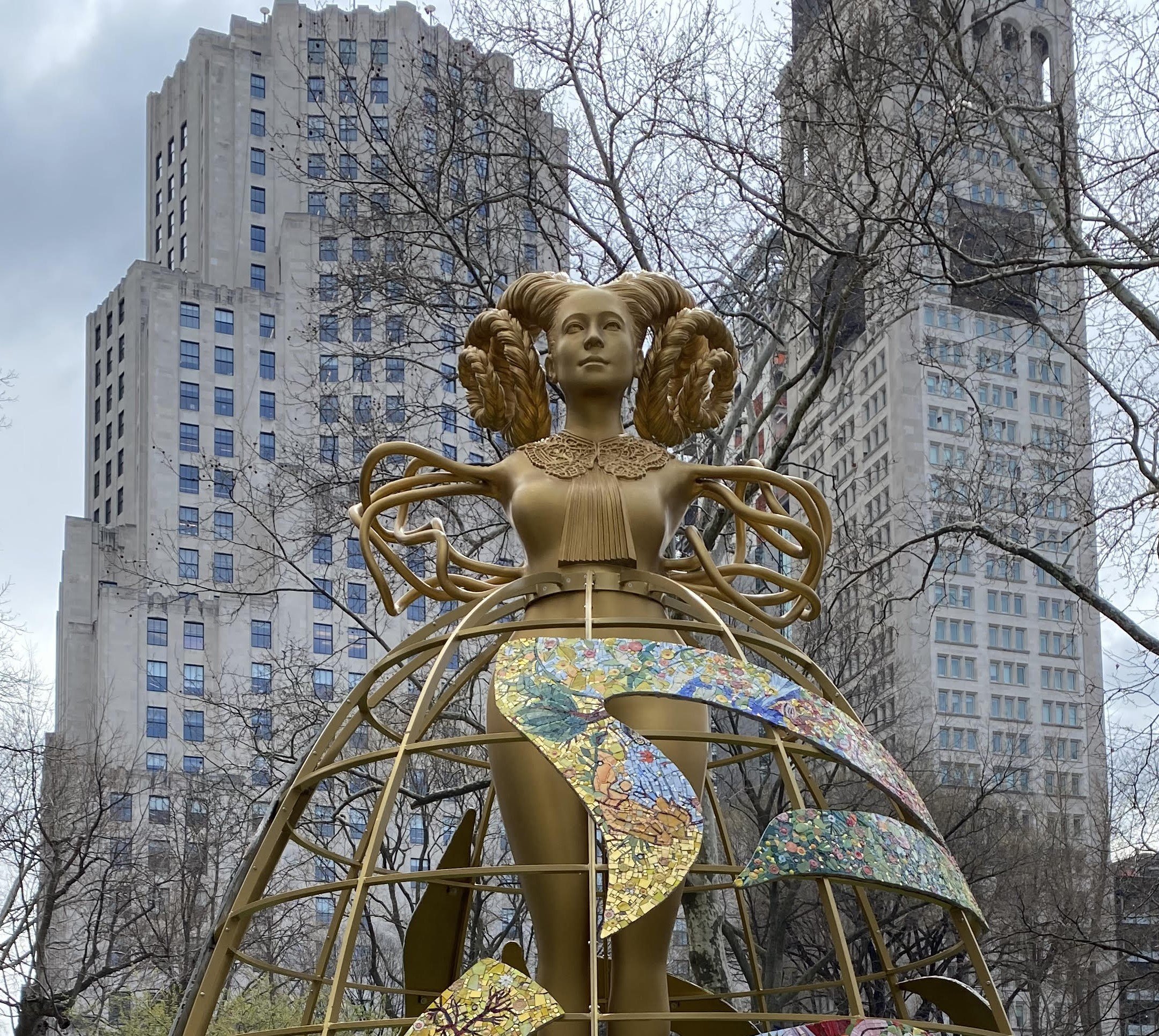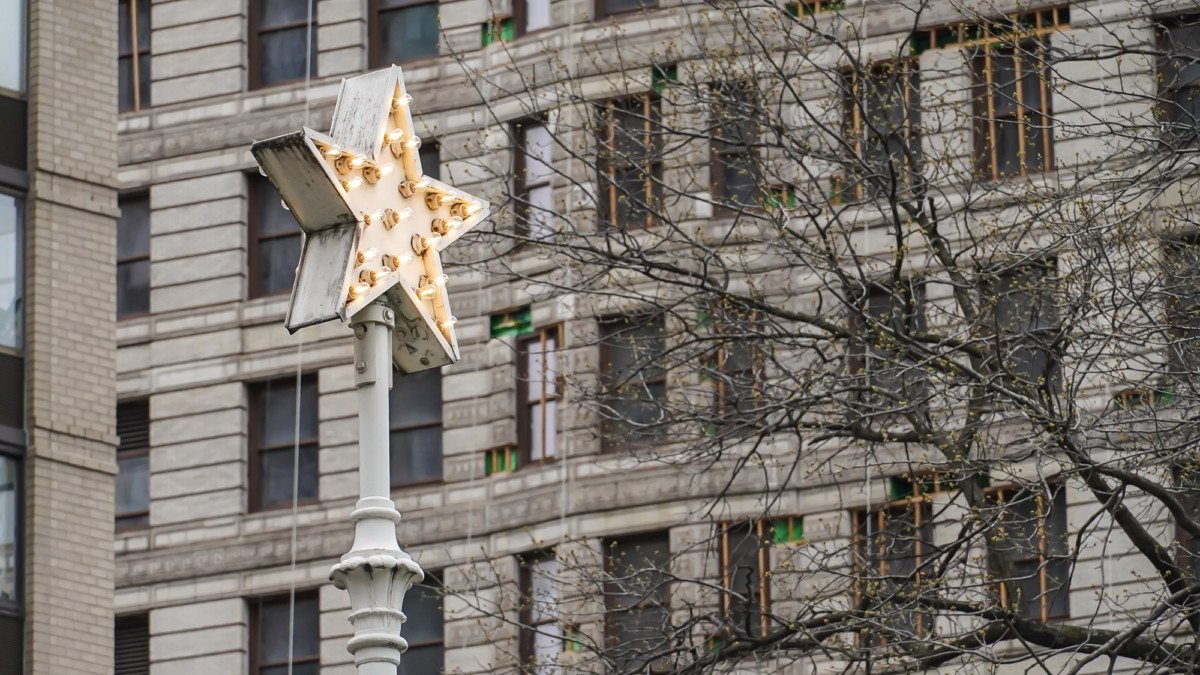
Jane’s Walk 2023
It Happened Here First
Herald Square to Madison Square
Even if you know Lower Midtown, you may not be aware of all the first-of-their kind events that took place in this area. A famous venue here was the setting for the first cat show in America. The multipurpose credit card was born here. It’s also where the first flash mob occurred. Take a walk from Herald Square to Madison Square as you discover these and other firsts.
Enjoy the walk, whether you do it as an armchair traveler or on the streets of Manhattan. (Walking directions are in green, but some places may not be accessible due to construction or other aspects of life in New York City.) Be sure to look for the fun facts highlighted in blue.
Route
About 1 mile
Begin at Macy’s Herald Square (Broadway/Sixth Avenue and 34th Street).
Go south on Sixth Avenue to 33rd Street. Turn east and walk past the Empire State Building on Fifth Avenue, making a stop along the way.
Go down Fifth Avenue to 25th Street, making stops along the way.
Enter Madison Square Park.
Explore Madison Square Park and surrounding buildings, including the Flatiron.
Macy’s and Herald Square
34th Street and Broadway/Sixth Avenue
Macy’s
Moved here from 14th Street in 1902
At the opening, the first building in the world with modern wood escalators. See if you can find a remaining one!
Scene of the first flash mob in 2003, in the rug department
At the first Macy’s (at 14th Street and Sixth Avenue):
First department store Santa (1862)
First woman executive in retail (1866)
R.H. Macy, founder of Macy’s department store, had a red star tattoo. A red star became Macy’s logo.
Herald Square
Named for the New York Herald, which moved here from Newspaper Row downtown in 1895
Newspaper founded by James Gordon Bennett
Paper featured sensationalism and scandal
First newspaper with foreign correspondents (1838)
Ornamentation from the top of the Herald building is now in Herald Square.
The founder’s son, James Gordon Bennett, Jr.
Won the first transatlantic yacht race in 1866
Liked to ride through Manhattan in his horse and carriage—naked!
Took over the Herald when his dad retired
Walk south down Sixth Avenue, turn left (east) on 33rd Street, and go to 33 W 33rd Street.
Birthplace of the Credit Card
You’ll see Dum Sum Palace here today, but this was once a different restaurant, Majors Cabin Grill. In 1950, Frank McNamara was entertaining some business associates there. At the end of the meal, he reached for his wallet and came up empty. Vowing to never face such an embarrassment again, he came up with the idea for the first credit card that could be used at multiple venues. He called it the Diners Club card.
More than 60 years later, Matty Simmons, a PR pro and colleague of McNamara, claimed that it was all a lie. He said he made up the story of the empty wallet, although he did credit McNamara with inventing the charge card.
Continue down 33rd Street to Fifth Avenue. Cross the avenue and walk south to 31st or 30th Street to get a good look at the Empire State Building.
Empire State Building
Fifth Avenue Between 33rd and 34th Streets
Completed in 1931.
First building in the world more than 100 stories tall.
At that time, the tallest building in the world, at 1,250 feet. (The Chrysler Building, the first in the world stretching more than 1,000 feet, had captured the title of tallest just the year before.)
Almost a square block at the ground level, it tapers with setbacks as it goes up. That’s because of a 1916 zoning law, the first comprehensive zoning regulation in the country.
In the Art Deco style, which originated in New York City in the 1920s.
Empire State Building under construction. Note the Chrysler Building nearby in the fog.
Because the Empire State Building opened during the Depression, it was hard to find enough tenants to fill so much space. In its early years, it was nicknamed the Empty State Building.
Previously at this site: Waldorf Astoria Hotel
Mansions of two branches of the Astor family were previously at the site of the Empire State Building.
In the late 1800s, the families leveled their mansions and built hotels. One hotel was named the Waldorf, the other the Astoria. Later, the hotels became one.
The hotel restaurant possibly served the first Eggs Benedict and of course its namesake Waldorf Salad.
When their mansion here came down, one branch of the Astor family built a new home at 65th Street and Fifth Avenue. It was later demolished to make way for Temple Emanu-el.
Walk south down Fifth Avenue to 27th Street.
Museum of Sex
Opened in 2002, the Museum of Sex is the first museum in the United States devoted to human sexuality. It has a permanent collection of more than 20,000 objects.
Amsterdam had the first sex museum in the world.
Continue down Fifth Avenue to 25th Street. The Worth Monument will be on your right, Madison Square Park on your left.
Worth Square Monument
Mausoleum of General William Jenkins Worth, a New Yorker who fought in the War of 1812, Seminole Wars, and Mexican-American War.
Erected in 1857, it’s the second oldest monument in New York; the oldest is the George Washington monument in Union Square.
The only other mausoleum in New York City is Grant’s Tomb.
Gen. William Worth
Gen. Worth was not the first person to be interred in this area. Before Madison Square became a park, it was a potter’s field (a place to bury the poor).
Turn left and enter Madison Square Park. Admire the temporary art installation. You might also want to take a minute to enjoy the dogs playing in Jemmy’s Dog Run.
Witness, by Shahzia Sikander
This temporary art installation, on view through June 4, 2023, is part of a multimedia project. Another part is at the Appellate Courthouse across from the opposite side of the park on Madison Avenue.
The larger-than-life golden female figure in Witness wears a steel hoopskirt partially covered by a mosaic. Her arms resemble tree roots, a fitting touch for public art in a park.
The lace collar on the statue was a trademark of Ruth Bader Ginsburg, the first female Jewish justice on the Supreme Court.
Head east across the park toward the turquoise-topped playground. Stop before you get there at the large monument.
Farragut Monument
Honors Civil War naval hero Admiral David Glasgow Farragut
Statue by Augustus Saint-Gaudens
Pedestal 1880 collaboration of Saint-Gaudens and architect Stanford White
Farragut was famous for his rallying cry as he led a fleet past ammunition in Mobile Bay: “Damn the torpedoes! Full speed ahead!”
This was not the only collaboration between Saint-Gaudens and White. One of their most famous was just outside the park, as you’ll soon learn.
Continue past the Farragut Monument to the northeast corner of the park. Look diagonally across the street at the New York Life Building.
Madison Avenue and 26th Street
New York Life Building
Designed by Cass Gilbert, architect of the Woolworth Building in Lower Manhattan
Opened in 1928
Setbacks as building rises due to 1916 zoning law, the first in the nation
Has a distinctive top
Previously at this site: Madison Square Garden
Stanford White’s Madison Square Garden, seen from Madison Square Park. (The building across 26th Street was the Jerome mansion, childhood home of Winston Churchill’s mother, nee Jennie Jerome. She was thought to be associated with the first Manhattan cocktail.)
Both the first (1879-1889) and second (1890-1925) Madison Square Garden were actually at Madison Square—unlike subsequent structures by that name.
The first Madison Square Garden had the first indoor ice-skating rink in America (1879).
Famed architect Stanford White created the second Madison Square Garden.
The second Garden was the scene of the first cat show in America (1895), the first car show (1900), and the first professional indoor football game (1902).
It was also where Stanford White was murdered (1906).
Diana, the statue on top of White’s Madison Square Garden:
Created by Augustus Saint-Gaudens
First nude female statue made in America
First statue in the world lit electrically at night
Because people were offended by Diana’s nudity, the sculpture was covered with a cloth (the snake-like object seen here)—but it blew away!
Head south in the park, passing the playground and lawns. As you walk toward the next stop, think about a couple of things you won’t see here today.
Birth of Baseball
1847 New York Knickerbockers. Alexander Cartwright, who wrote the rules of the game, is in the top center.
When this area was just an open field (it didn’t become an official park until 1847), a group of young men liked to play ball here.
One of them, Alexander Cartwright, wrote down the rules of the game in 1845.
These friends formed a team called the Knickerbocker Base Ball Club.
On June 19, 1846, the Knickerbockers took a ferry across the Hudson River to Hoboken, New Jersey, where they played the first recorded baseball game in history.
Despite having Cartwright on their side, the Knickerbockers lost the first official baseball game. The score was an embarrassing 23-1.
Statue of Liberty Torch
The arm of the Statue of Liberty with the torch was displayed on the western edge of Madison Square for several years, starting in 1876.
The Statue of Liberty was constructed in France.
The first part to be completed was the arm holding the torch. France sent it to the 1876 Centennial Exposition in Philadelphia.
It then came to Madison Square Park, where it remained as part of an effort to raise funds for the pedestal.
In 1885, Joseph Pulitzer, publisher of the New York World, began to print names of contributors to the pedestal fund in the newspaper. The money poured in, including pennies from children.
After the completed Statue of Liberty was dedicated on October 28, 1886, a parade was held—the first-ever ticker tape parade.
Go to the kiosk near the southeastern part of the park.
Shake Shack
Opened in 2004, this is the first Shake Shack.
Shake Shack now is in more than 250 locations across the globe.
Just past Shake Shack near the 23rd Street side of the park, you’ll see a white pole with a star on top.
The First Community Christmas Tree
In 1912, a 75-foot pine from the Adirondack Mountains was put up in Madison Square Park and decorated with lights. This was the first outdoor community Christmas tree in the United States.
The Star of Hope, a five-pointed star on a 35-foot pole, marks the site today.
In 1882, Edward H. Johnson, a colleague of Thomas Edison, strung together 80 small, colorful light bulbs and placed them on a Christmas tree in his Manhattan home. These were the first electric Christmas tree lights.
Continue exploring Madison Square Park and the surrounding structures. Here are three important structures near the southern (23rd Street) end of the park, dating from the time when this was a posh area, the northern end of Ladies Mile.
Metropolitan Life Clocktower
On southeast side of Madison Square Park
Clocktower added to existing building in 1909, making it the tallest building in the world at the time (until the Woolworth Building 4 years later)
Clocks on all four sides
Clocktower is now the New York Edition hotel
Flatiron Building
Resembles an old-fashioned flatiron from above
Only work of famous architect Daniel Burnham in New York (1902)
On a triangular plot created by the intersection of Fifth Avenue and Broadway (which goes on a diagonal across the rectangular grid of the city); many such intersections in Manhattan, often dubbed “Square” (e.g., Herald Square)
Odd shape of the building created a wind tunnel. Police would shoo away men ogling women’s blowing skirts by shouting “23 skiddo!”
Clock on Fifth Avenue
Across from Madison Square Park on the western side
Created in 1909
Restoration in 2011 sponsored by Tiffany. The company has offices in the Fifth Avenue Building. (The clock is in front of that building.)
Several other street clocks remain in commercial areas of Manhattan, relics of the days when most people didn’t have watches.
Information for this walk comes from the book New York City Firsts: Big Apple Innovations That Changed the Nation and the World.






















